|
Horcrux. Deluminator. Howler. Marauder’s Map. Deathly Hallows. Remembrall. And my favorite, the Monster Book of Monsters.
These are just a tiny sampling of the magical items and artifacts scattered throughout the wizarding world of Harry Potter. In the first article in this series, I explored how the Houses were an incredibly effective piece of the world building puzzle, and for this article I will look at why the artifacts and items worked as effectively as they did. As any fantasy reader knows, magical artifacts are commonplace in every fantasy novel. Whether it be the One Ring in Lord of the Rings, or the Wardrobe in Chronicles of Narnia, magic items have always been a backbone of the fantasy genre. One of the most used fantasy tropes is that the hero must find artifact X to prevent catastrophe A or villain Y from taking over or destroying the world. What then, separates the Harry Potter artifacts from all the others? Let’s have a look at how Rowling used these items to perhaps greater effect than any other fantasy author. Let me establish a premise at the outset: magic items generally produce an impressive, fantastical effect. What Rowling understood is that we as readers like to experience awesome things that aren’t possible in our world, so those fantastical elements needed to be ramped up to a higher level. So, if we accept the premise that magic items are cool, and readers like to experience them, what is an aspiring fantasy writer to do with that information? Rowling’s answer to that question: Shower the reader with them and make each memorable and unique. What Rowling teaches us is a master lesson in pacing and leading the reader. When we, as a reader, experience something we think is marvelous or interesting, we want more. She knew this, and from the beginning all the way to the end, led us by the nose from one wonderful item to the next. Notice that there is ALWAYS an insignificant amount of time that elapses between the discovery of magical items. In the very first chapters of the series, lets look at how she paced us from one nifty item to the next: 1. Flying Motorcycle 2. Deluminator 3. Flying letters from Hogwarts 4. Diagon Alley Shopping (numerous) 5. Magic train station (9 and 3/4) 6. Sorting Hat 7. Potions 8. Etc. Note I did not include magical occurrences such as shape shifting, disappearing glass, etc. If you ever wondered why the Harry Potter series had such a “one more chapter” feel to it, one of the multitude of reasons was that Rowling had interesting magical things happening constantly. There was, even in later books, virtually no down time from showing off some new form of magic or artifact. Even something as simple as a Remembrall showing up, effectively leads us from one interesting item to another. By doing so, she establishes such a trend of showing us interesting things, that we assume another is bound to show up within the next few pages. As a reader, I have the attention span of a toddler in a room full of toys. I tend to read in short bursts, and I usually effortlessly find a stopping point to pick up later. I never read through books in a short number of sittings, even books I love such as Mistborn usually take me quite some time. Potter, however, was different. I plowed through those books as though a million dollar prize waited at the last page, and a big reason was that there was so little downtime between interesting things happening, making it difficult to find a stopping point. Even if the characters were doing something mundane, there was always some neat item or magical effect to handle the “cool factor” load. Thus, she established a pattern of always wanting to see the next interesting item or effect, and forcing the reader to assume there would be another coming up, which there invariably was. From a technique standpoint, the staggering of magic effects was already brilliant. She further upped the ante by not only having magical items but also giving them actual names that fit like a glove. As I outlined in the previous article, naming can be a highly effective technique of persuasion to immerse a reader. I’m not sure Rowling ever studied persuasion technique, but her items are filled with master level persuasion and naming conventions. She did not just insert a magical map; she created the Marauder’s Map, a brilliant name design because of the use of a unique word: marauding. Everyone knows the word, but it isn’t one you hear every day, thus when you hear it, it sticks in your mind better than say, words like move or mobile. Marauding vs. Moving or Mobile is a world of difference in both cool factor and connotation. Someone using the Marauder’s Map is likely sneaking around, so the name implies what the map is used for. Then there is possibly the alpha and omega of brilliant naming: Quidditch. With Quidditch we see another effecting naming technique: inventive uniqueness. It’s one thing to use a relatively unique word like marauding, but to invent multiple new words is another matter entirely. Quidditch, Quaffle, Bludger, and Snitch. All four highly unique words that bear the sort “sticky” quality that almost forces them to stand out in your head. I once read in an article she had five pages of names that began with Q before settling on Quidditch. First, names that begin with Q are automatically relatively unique, but then she leveled up even further by settling on a name easy to pronounce, yet not something you’d ever read before. In terms of world building, it does not get much nigher level than this, and the amount of effort and attention that went into even ancillary items shows it was not an accident that Potter became so iconic. There is yet another element: the creation of insignificant, yet awesome items. Example A: the Howler. This is an item that is, for all intents and purposes, is irrelevant. It bears virtually no significance to the plot, except to establish how the Weasley family operates. And yet, the Howler is one of the more memorable items. The ability to take a mundane thing such as a letter from parents, and turn it into a compelling world building object that also serves to develop characters, is a master stroke in creating audience investment and interest. What is your favorite magical item in the series? Let me know on Twitter! Steve Mager If you enjoyed this article, please share it and follow me on social media: Facebook: www.facebook.com/StevenAMager Twitter: https://twitter.com/StevenAMager Instagram: https://www.instagram.com/steve_mager/ Get my book, Forging the Iron Mind: [https://amzn.to/2uxRvCs]
0 Comments
Harry Potter, without a doubt, has become a cultural icon over the years. Generating billions in revenue, an entire theme park, and enchanting millions of fans are just the beginning of the impact of the Potter series. I have been fascinated for some time about the techniques Rowling used, that allowed Potter to become such a fantasy juggernaut. Now that I write fantasy myself, I spent a great deal of time analyzing what techniques work, and why they do so effectively. How did Potter succeed where others failed? After examining several fantasy series, I’ve detected a few reasons Harry Potter succeeded, so I thought I’d write a series of blog posts breaking down the most effective parts of the series. I’ve been in sales and studied persuasion technique and effective wordplay for years, so it fascinates me to watch when it works and when it doesn’t.
I’ve made the argument for some time that Harry Potter bears arguably the most effective world-building in the history of fantasy. Note that I did not say the most in-depth or most comprehensive, I said effective. So today, I’ll talk about just one small piece of the world building puzzle: The House system. I believe the Hogwarts house system to be one of the most compelling pieces of world-building in fantasy history, and I will attempt to break down why it worked. Generally, people know the four Houses, Gryffindor, Slytherin, Hufflepuff, and Ravenclaw. If you spend five minutes on social media, you will see people placing the house they identify with in their profile, and having elaborate discussions as to why they identify with that particular house. One of the most effective modern literary techniques is to create a character, item, or situation that allows the reader to see themselves and project onto. Harry Potter has a series of well-developed characters, so Rowling used that very same technique but did so with an elaborate House system. Let’s examine why the House system was so effective as a literary tool. First, let’s lay out the characteristics of each house. Here are the general breakdowns as most people see them. Gryffindor: Courage, Honor, Bravery, Daring Ravenclaw: Intelligence, Savvy, Creativity Hufflepuff: Humble, Benevolence, Friendship Slytherin: Ambition, Cunning, Resourceful Those are generic breakdowns as seen on the surface, but let’s delve a little deeper into the genius-level wordplay Rowling used for the House names. If you notice, the very names evoke the qualities present in the House. Gryffindor evokes the image of a regal Griffon, a fantasy creature that only shows up in the book as a statue. When one thinks of a Griffon, they think of the lion and eagle hybrid. Keep in mind that lions and eagles are already two of the most majestic creatures on Earth, so just evoking those two animals is already a powerful image. Just look at the house sigil, a roaring Griffon atop searing scarlet and gold, two colors that no one has trouble associating with courage and bravery. The name and the image, along with the animals represented in our mind’s eye, conjures up the very qualities the name itself generates. Ravenclaw automatically generates two images: a stately raven (thanks Poe) and a sharp claw. Ravens have long been associated with omens and intelligence. Note that ravens can make complex decisions, as they have one of the largest “bird brains.” In other words, Rowling intentionally chose one of the smartest birds to be immediately identified with the House most associated with intelligence. Then we have the word claw, which immediately conjures the image of a razor-sharp talon, so in combining the two, we get sharp intelligence, the very characteristics of the house itself. Hufflepuff, right out of the gate, makes us think of Huff and Puff, which is what dragons and pig-eating wolves do. Not just any dragon though, that specific combination of words conjures the fairy tales of yore. You don’t think of a raging spine covered dragon or wolf, you think of a sort of plump, cutesy, friendly version, which falls right in line with the characteristics present in the house. The house sigil, however, is a badger, a docile creature that fights fiercely when cornered. Slytherin immediately makes one think of slithering, a characteristic present in snakes, as well as back-alley criminals. Slither is a particularly effective word to build on because it isn’t a word you hear every day, and carries precise connotations. One of the prime lessons of persuasion and wordplay is to pick words that stick in people’s heads as unique, and slither does just that, conjuring up images of slimy snakes, and skulking around. So now that we’ve broken these down, I hope it’s clear that none of her choices were random or haphazard. She chose these words to build the Houses around because of what they evoke when we read or hear them. Yet, she went even further. Let's look at the founders of the houses: Godric Gryffindor Rowena Ravenclaw Helga Hufflepuff Salazar Slytherin Notice anything in the construction? It is the same technique Marvel has used for decades: Peter Parker Wade Wilson Otto Octavius Bruce Banner Reed Richards Stephen Strange Bucky Barnes And that doesn’t even begin to cover them all. This is a technique called alliterative naming, where the initials of a first and last name are the same letter. Why use this? It creates a pattern that makes it easier for our brains to retain the information. As I stated earlier, none of her execution in the world building of Harry Potter was an accident. She specifically engineered these words to not only allow us to project images and thoughts onto but easily remember. As a writer, it helps to learn the techniques used by the most successful, and as we can see here, her success is not an accident of luck. Every fantasy book has various guilds or orders, yet they are usually called a thieves’ guild, or a warriors’ guild, which does nothing for the reader concerning projection, nor do they sound cool or unique. Rowling trumped every other fantasy book by not only incorporating a traditional fantasy trope but elevating it to a far higher level just by changing the wordplay. Now, as a result, millions of people know to what house they’d belong. If you are a writer, this is the standard you need to apply to yourself. Is your world building causing the reader to see themselves? If not, you may want to go back to the drawing board, as the standard is now incredibly high. In this series, I’ll be exploring other elements of the Potter series and how they managed to combine to build the most iconic modern fantasy series. Let me know what you thought, and if you have ideas for things you’d like me to explore in this series. Thanks for reading! Steve Mager If you enjoyed this article, please share it and follow me on social media: Facebook: www.facebook.com/StevenAMager Twitter: https://twitter.com/StevenAMager Instagram: https://www.instagram.com/steve_mager/ Get my book, Forging the Iron Mind: [https://amzn.to/2uxRvCs] Over the past several weeks on Twitter, I’ve seen a significant number of writers and artists looking for background music that bears a more dark and gloomy tone to use as inspiration for their art or to put them in the proper mindset. As a result, I did a small Twitter thread outlining some of the best artists to use for this purpose. Given how often I see the request, I decided to write a full blog post expanding on the Twitter thread I did this past week. For some background, I’ve been listening to heavy metal and darker music for over 20 years, so I’ve amassed quite the archive of music, much of which leans toward the bleaker side of things, so I feel quite qualified to take you on a journey into the depths of darkness. Let me start by outlining the stages we will progress through, as melancholy music comes in many different forms. This is not meant to be an exhaustive outline of every sub-genre available but will be more than enough to set the tone. 1. Dark Ambient: This genre is purely instrumental background music, and ideal for most of our primary purposes of setting the mood for either writing, art, or a themed Halloween party. 2. Dark Instrumentals: These are more typical bands that use traditional instrumentals to break up their standard albums, some having made entire instrumental records. These are appropriate for mood, but also a little more punishing and dark than traditional Dark Ambient. 3. Black Post Rock Folk: This is a genre that has similarities to classic black metal, but bears themes of nature and humanity, while mostly eschewing the screeching sensory assault of traditional black metal. 4. Spectral and Shoe-gaze: Spectral is characterized by church organs and typically a female vocalist with an ethereal quality to the vocals, while Shoe-gaze attempts to induce a more trance-like experience. 5. Doom Metal: Punishingly heavy guitar riffs and haunting voices characterize this sub-genre of metal. Themes can get extremely dark, usually focusing on misanthropy and nihilism. Be warned; this genre can get extremely depressing, so do not venture here unless you are prepared mentally for soul-shattering blackness. 6. Funeral Doom: The alpha and omega of the bleak. This genre is very similar to Doom metal but adds in funeral dirges and things like Gregorian chants, and nearly always has a death related theme. 7. Traditional Metal: Many “normal” bands have dismal themes, and I’ll cover a few of these as well. Now that I’ve outlined the styles let’s get down to the bands. I’ll lay out the best of each group and some recommendations for other honorable mentions. Dark Ambient: Nox Arcana There is no other band you need for Dark Ambient. This group has been doing nothing but for decades, and as a result, bears an astonishing array of material. Even if you need something oddly specific, they likely have an album that caters to that need. Need a Germanic werewolf gothic horror theme? Ebonshire. How about a spectral carnival theme? Theater of Illusion. What about a dark castle in a frozen wasteland? Darklore Manor and Winter’s Knight. Maybe you need some evil pirates? No problem, Phantoms of the High Seas. Perhaps you are a Poe and Lovecraft aficionado. Ok, Shadow of the Raven and Necronomicon are there for you. There really is no other band you need for Dark Ambient. Honorable Mention: Lustmord and Deathprod Dark Instrumentals and Black Post Rock Folk: Agalloch Possibly my favorite band of all time. Their first four albums are all masterpieces, and even though they broke up, I’ve found no other group that can match their style exactly. Their instrumentals such as The Misshapen Steed and the Hawthorne Passage are best in class at evoking a dark, contemplative mindset, while their traditional songs such as She Painted Fire Across the Skyline and You Were but a Ghost in My Arms ruminate on nature and it’s relationship with humanity. Read the lyrics, and you will understand why they are the best of the best in this sub-genre. Honorable Mention: Mortiss, Burzum Spectral and Shoegaze: Anna Von Hausswolff I invented the spectral genre just for Anna. Her haunting ethereal voice backed with her church organ creates a tone that feels wholly original. The name of her last album is Dead Magic, which pretty much sums up what your expectations should be. Shoegaze is a more trance-like type of metal with extended arrangements where the artists “shoegaze” as though they are in a trance and also produces some very dark material. Bands like Katatonia and Alcest have gotten as close to perfection as you can get within this genre. Speaking of this genre, do yourself a favor and listen to my favorite Christmas album of all time: Tarja’s From Spirits and Ghosts: Score for a Dark Christmas. Honorable Mention: Chelsea Wolfe, Alcest, Les Discrets Doom: Swallow the Sun Songs from the North is one of the greatest albums I’ve ever experienced. This colossal triple album takes the listener on a journey from the beauty of nature to the punishing blackness of the abyss. Doom metal, the genre first pioneered by Black Sabbath, is a vast genre of hundreds of bands sure to crush your soul. They are not recommended for those with mental health issues or depression. Honorable Mention: A Swarm of the Sun, Khemmis, My Dying Bride, Paradise Lost, Candlemass, Avatarium, Pallbearer Funeral Doom: Mournful Congregation and Dolorian You were warned. Do not even attempt this genre unless you are already in a positive mindset, as this genre can sink your soul. Doom is dark enough, but this takes depression and misanthropy to a whole other level. And definitely don’t read the lyrics unless your mind is girded for battle against the forces of darkness. Honorable Mention: Ahab Traditional Metal: Danzig and Type O Negative These, relative to the others, are more traditional metal bands that deal with darker themes. Danzig 4 and October Rust are two of my favorite albums of all time, and will undoubtedly take you on a journey, albeit one that isn’t quite as disturbing as many of the offerings mentioned above.
Honorable Mention: Moonspell, Tryptikon, Celtic Frost There we have it, your journey through hell is complete, with some albums sure to make Satan himself raise an eyebrow. Now that we’ve survived this journey, perhaps I’ll do another on the most uplifting music next. Let me know on social media your favorites, and I’ll update this list! Steve Mager If you enjoyed this article, please share it and follow me on social media: Facebook: www.facebook.com/StevenAMager Twitter: https://twitter.com/StevenAMager Instagram: https://www.instagram.com/steve_mager/ Get my book, Forging the Iron Mind: [https://amzn.to/2uxRvCs] I’ve long admired those who are seemingly endless fountains of creativity, unimpeded by such limiting factors as writer’s block, self-doubt, naysayers, and criticism. Let me give an example of what limitless creativity looks like: Mark Rosewater, lead designer for the card game Magic the Gathering. Here is a list of just some of the machine like production capabilities of this man:
1. Writes a 3-6,000 word blog each week. 2. Answers hundreds of questions on his Tumblr a week. 3. Does a Drive to Work podcast every day. 4. Answers people on Twitter. 5. Head designer for a game with incredible complexity and interactions. 6. Spends time with his family and multiple children. 7. Writes a comic every single day, Tales from the Pit. The man is a machine that would make the Terminator envious. I follow a lot of people in the writer, mindset, and creative community, and he is at the top tier as it relates to content generation. Even now, sometimes I sit and wonder how one man can churn out such a high level of content, day in and day out. He is not the only one; another of my favorite people to watch is Delilah Dawson, a writer I follow on Twitter. Here’s what she does daily: 1. Her hashtag TenThings, where she helps new writers overcome problems of all kinds. 2. Answers questions throughout the day on Twitter. 3. Writes daily poems from the perspective of a dog, which are fantastic. 4. Still manages to write and edit books at a high level. 5. Manages a family as well. How do they do it? How are they able to churn out relentless content so consistently? Do they not suffer from writer’s block or doubt? One of my favorite fantasy artists, Kazumasa Uchio, issued the following quote on Facebook, which I found to be profound. (forgive the poor translation): “When you draw it without making it through the brain, it's going to be a good painting. When I think about it, it's full of failures, but if you don't repeat this many times, you won't be born unconscious.” - Kazumasa Uchio Allow me to issue my interpretation of this quote: Kazumasa is saying that in order to achieve the unconscious “zone” of creativity, you have to plow forward and do it, even when it sucks, and by doing so, gradually the content will improve, because you achieve the “zone” more often. As one trudges through the suck, they start to gain a near immunity to the mire of mediocrity. In other words: To be more creative, you have to push forward by doing creative things continually, persistently, even they are total trash. I’ve noticed this in my own life. If I take any length of time off from undertaking creative projects, I can feel myself getting more inept over time. The words struggle to flow, and I become frustrated at my ineptitude, thus causing me to produce less. The process then becomes a cycle that feeds on itself, becoming an endless vortex of frustration. My thinking seems to revolve only around the most simple concepts, and I fall into a pit of consumption instead of production. The adage “practice makes perfect” is true obviously because the more you do something, the better you will get at executing. Yet, there exists a higher level. The “zone” if you will. Every writer, artist, or performer knows exactly what it feels like to be in the zone — that sequence where the words or brushes or shots flow like an endless waterfall. The question then becomes, how does one get into the zone more frequently? By embracing the suck. The one consistent thing I see from the people who seem to live in the zone is that they don’t take time off. Ever. They plow forward even when they know they are not at their creative apex, and by doing so, reach their creative zenith more often than others. Science of the of the brain confirms this, where consistent artistic interpretation and processing serves to activate the neural networks within, allowing one to operate at a higher level more consistently. Essentially, to be more creative, you have to continually be doing creative tasks, as it feeds upon itself and becomes a self-perpetuating cycle. Several months ago, as I began work on my first fantasy novel, The Witchbreaker Saga, I vowed to do some level of writing every single day. Whether it be editing a chapter, or writing a new one, I decided to take no days off, no matter what. As a result, I find the ideas flow more freely, and writer’s block has not impeded me for any significant length of time. I also spend time every single day world building. Inventing new plants, animals, cultures, magic systems, all of the things required for a fantasy novel. Due to the constant creative thinking, I now have the “aha” moments far more frequently, which translates into a higher degree of confidence as I write and build. Here is the critical part: There are times when I KNOW my work is atrocious, yet I place the terrible words down regardless. There are many ways we can optimize our mindset for creativity. Generating endorphins and serotonin in our brain can be achieved through proper sleep, diet, and exercise daily. Even if it is only walking the dog, I find that most of my best ideas come as I hash out plot points, world building items, and characters while walking the dog around the neighborhood. Even if you have to talk to yourself on the way to work, or driving to a meeting, try to stay in a creative mindset as much as possible. Mark Rosewater did a podcast on creativity awhile back, which I recommend everyone listen to, that I will outline for you here, with several tips for stoking the creative fire. Mark Rosewater on Creativity: Connect things that don’t usually connect. 1. Believe you can be more creative, make the mental shift. 2. Don’t approach problems the same way don’t apply previous knowledge. 3. Seek a variety of expertise to connect more things in unique ways. 4. Understand it is a stepping stone process. Use multi-step impractical ideas to lead to solutions. Answers might be multiple steps away. 5. Be willing to experiment. Mistakes are excellent teachers. Get new information by trying things. Learn what’s irrelevant. 6. Accept that there’s more than one answer, making the process less daunting. Multiple solutions create more paths. 7. Collect feedback from those most affected by the problem. 8. Play games and do puzzles. Stay mentally active. Creativity is a muscle. 9. Think about why things are. Examine multiple solutions. 10. Find more answers to a problem you’ve already solved. With the pressure off, learn more. It builds confidence to see things in action. There you have it; I hope this helps someone inch a little closer to achieving their dreams. Let me know either here or on social media what works for you to peak your creativity. Thanks for reading! Steve Mager If you enjoyed this article, please share it and follow me on social media: Facebook: www.facebook.com/StevenAMager Twitter: https://twitter.com/StevenAMager Instagram: https://www.instagram.com/steve_mager/ Get my book, Forging the Iron Mind: [https://amzn.to/2uxRvCs] “Fight for your dreams and your dreams will fight for you.” -Daniel Bryan
Do you have a dream? We all have a dream. For some, the dream is bigger than others; perhaps you want to be a writer, professional athlete, artist, or CEO. Maybe you desire a promotion at work, to make a few more dollars to provide for your family. For me, that dream is to become a fantasy novelist and author. I would love to create a fantasy world that people enjoy, and I’d love to see fan creations such as art and fan fiction for the people and locations I’ve written. Whatever your dream, in our modern age, it is simultaneously both easier and harder than it has ever been to achieve. On the one hand, it is far easier. We have access to social media and a nearly endless array of expertise and opportunity to network with masters in their field. The vast arsenal of knowledge at our fingertips is unprecedented in all of human history. The range of tools available is nearly limitless, and yet, many still struggle to realize their fantasies. We also live in an age of distraction and competition. Never before has it been so hard to maintain focus. Between our smartphones buzzing us with alerts every two seconds, coupled with the addictive nature of video games, books, movies, and television, many people struggle to stay on the path necessary to achieve their goals in life. The world has become exceedingly efficient at dominating our time and headspace. Technology companies and entertainment entities have refined triggering dopamine hits in our brain to such a precise level that millions have become addicted to consuming, rather than taking the necessary steps to build the life of their dreams. For nearly twenty years, I fell into the cycle of consumption, rather than execution. Every waking moment not spent in a 9 to 5 job was spent in front of the television, either gaming or watching films and TV shows. My DVR was packed full of endless content, just ready for me to plop down in my chair to watch. My library of video games had become mountains, some that I’d never even played, resolving one day to plow through the backlog. My life had become a revolving door of consumption, as I slogged through the daily grind at work, only to make it home and pump my brain full of content generated by someone else. Even while writing my first book, I still spent more time than I care to admit consuming other content. Then, one day as I sat watching a football game, I came to a staggering realization: I was spending an inordinate amount of time watching other people live their dreams, instead of trying hard enough to live mine. Every movie you have ever watched contains people whose dream it was to be an actor or screenwriter. Every sporting event has people who were once children, dreaming of participating at the same level as their heroes. Perhaps they grew up with a poster of Micheal Jordan, or Joe Montana, or someone like Arnold Schwarzenegger hanging up on their wall. For me, I was a disciple of Arnold. I practically worshipped him growing up, and loved virtually all of his movies. As I got older and took up bodybuilding, I studied everything he had to offer, ritualistically studying Pumping Iron and the rest of his life. Unfortunately, back then I only studied his actual lifting technique, leaving behind the most critical part of what he was doing: his mindset. Arnold wasn’t just lifting weights; he was networking and building himself, trying to get movie roles and magazine covers and media exposure. His focus was singularly on one thing: living his dream. Regardless of one’s opinion of the man, it is indisputable that he has lived a life of extraordinary achievement, with a pantheon of accomplishments nearly unrivaled in our society. This is going to sound heretical, especially coming from a writer, but even reading can become a bottomless pit of consumption, albeit one that is far more valuable than visual media. Obviously, to be a great writer, one must learn from and read those who have already executed at the highest level. Reading is a critical operation to learn technique, plotting, and experiencing a great story. However, that author you are reading at one point had a dream to make a living from writing. The book in your hand is proof that on some level they made their dream reality. Many aspiring writers fall into the trap of too much reading, telling themselves they are advancing their skill and knowledge, which is true but only to a point. At some juncture, you have to actually execute to advance your dreams. Do not spend your life watching others achieve their dreams, use them as motivation to work even harder to produce and execute to further yours. How then do we strike the correct balance? One simple rule: Produce and execute, before you consume. Consumption can actually be valuable. I’m not here to hate on video games or movies, I’ve even done reviews on them pretty regularly. We sometimes need to get a spark from another creator’s content. What I have done, that seems to work pretty well so far, is no consumption without creation first. That means that I have to write a blog, edit a chapter, or network on social media before I do any gaming or TV watching. Then, in the event I watch one show, I have to write another 500 words or so before I watch another. Keep yourself always working to advance yourself forward, rather than staying stagnant. In my first book, I wrote about the concept of Future You, and taking actions in the present that will influence how Future You develops into the person of your dreams. Visualizing the impact of steps you take in the present can be a powerful tool for advancement. Ask yourself: Is the action I am taking right now advancing myself to the person I want Future Me to be? I wish you the best, and I hope you make all of your fantasies come to life. If you have any questions, let me know, and I will be happy to help! Steve Mager If you enjoyed this article, please share it and follow me on social media: Facebook: www.facebook.com/StevenAMager Twitter: https://twitter.com/StevenAMager Instagram: https://www.instagram.com/steve_mager/ Get my book, Forging the Iron Mind: [https://amzn.to/2uxRvCs] Well, here we are, if you are reading this, then you survived another year filled with a lot Garbage, but also the Glorious. 2018 was filled with absurdities, triumphs, and failures of epic proportions. So without further ado, let’s take a look at the Best and Worst of 2018.
Worst Technology that People Think Is Awesome: Virtual Reality Make absolutely no mistake: Virtual Reality is the future. In our lifetimes, we will likely see Virtual Reality ruin all of our lives, as it will eventually make heroin addiction look like aspirin. Once the tech gets sufficiently powerful, miniaturized, and cost-effective, it will make the worst Black Mirror episode look like a documentary. However, right now, it is utter garbage. Far too bulky and underpowered, it makes for a decent tech demo, but it’s nowhere close to the soul-crushing juggernaut it will eventually become. All Sports are Terrible, except the NHL Yes, all of them. This has been happening over time, but now it seems that all of the soul has been sucked out of sports. The rules are such now that even a minor celebration will get you excommunicated. If you play defense, and you even fart in the direction of an offensive player, you’ll get penalties so harsh you’ll rethink your life. Let me tell you all something: If Dan Marino had played in this NFL era, people would think he cut a deal with the devil over what he’d be doing to the NFL. Then on top of all of this, we now have NBA coaches lecturing us and telling us what bad people we are. Sports used to be the one escape from politics, and now even they have been tainted. There is still one bastion of hope: the NHL. They still fight, you can still play real defense, and there’s virtually no downtime to check the replay booth every two minutes. The Death List We lost a lot of true icons this year, from Aretha Franklin, Stan Lee, R. Lee Ermey, to Stephen Hawking. Nowhere near a complete list, 2018 was brutal on cultural icons. Apple and the Curious Case of Bending iPads Only Apple could have even tried to defend this and still be in business. Any other company on the planet would have been destroyed over even attempting to say tablets arriving bent wasn’t a problem. When the iPhone had the bending issue, they didn’t deny it, but this time, they were outright like “Yeah this is Ok.” They’ve since offered exchanges, but the unmitigated hubris of a company to even try this was unbelievable. Apple also gets another ding for App Store censorship, removing completely historically accurate strategy games from the App Store. Worst Entertainment Change: Comedy Comedy has been awful for a while, at least since 2008, but 2018 comedy is horrific. So sterile and boring comedy has become, that I could not even name one single good comedic performance, either on TV, in the Movies, or stand up. Embarrassingly abysmal and devoid of any edge, comedians turned to the same recycled Trump jokes over and over. George Carlin and Richard Pryor would be apoplectic over 2018 comedy. I’ll say it now: the last good comedy movie was 2008’s Tropic Thunder. The winner of the Worst of the Year: Politics All of the items mentioned above combined aren’t even 1% as bad the current political landscape. Relationships destroyed, families broken, real-life harassment and assault, 2018 has got to be the worst year in politics of my lifetime, and it shows no sign of ending anytime soon. Now that we’ve slogged through the Garbage let us move onto the Best of 2018. Marvel still Crushing the World Black Panther, Avengers, Ant-Man, Deadpool, and Daredevil. Yet another year of not only dominance but excellence. The Marvel Juggernaut rolls on, with no sign of stopping, and I love it all. Hereditary and Horror Delivering Classics I love horror, and 2018 was scintillating. Hereditary will go down as one of the greatest of all time, and we saw a litany of incredible horror movies such as Upgrade, Halloween, A Quiet Place, Mandy, Suspiria, Annihilation, and Revenge. That, by the way, is nowhere near a complete list. As a horror fan, this year was as great as any before, and one of the few genres to show innovation and take risks. God of War Reinvents, and Dominates God of War 3 is one of my favorite games of all time. When I found out they completely ditched the gameplay style I was ready to hate, but boy did they deliver. To change a great existing franchise to this degree, and hit a grand slam the way that they did, elevates this to Game of the Year, easily. Also, Red Dead Redemption 2 is overrated. Cobra Kai brings back the Karate Kid, and somehow doesn’t suck. I generally hate reboots and bringing back old franchises, but I have to admit, Cobra Kai was incredible. Every studio on earth should take note, this is how a reboot/remake/modern sequel should be done, and was one of the best TV shows of the year. Best Promotional Stunt of All Time IHOB. International House of Burgers. I am completely serious when I say that I have never seen a better promotional stunt in my life. They got the entire country talking for days and basically did it for free. I doubt we will ever see a better-executed promotion in our lifetime. People acted like they hated it, but it generated talk and controversy. And controversy creates cash. Well done. Best Use of Technology: Space X launches a car into space. Yeah, we got more rovers on Mars and whatnot, but how do you top Space X launching a freaking Tesla car into outer space, and returning successfully? You don’t, which is why this is on the list. I don’t know about the rest of you, but I’m ready to colonize Mars. Unfortunately, this won’t happen in my lifetime, so I’ll settle for launching cars into space. So there you have it, My list of the Glorious and the Garbage of 2018. For myself, it was pretty good, I wrote one book and published it, and finished the first draft of another, and got into better shape than I’ve been in 20 years. 2019 is going to be wild, so buckle up. What were your best and worst of 2018? Let me know! Steve Mager If you enjoyed this article, please share it and follow me on social media: Facebook: www.facebook.com/StevenAMager Twitter: https://twitter.com/StevenAMager Instagram: https://www.instagram.com/steve_mager/ Get my book, Forging the Iron Mind: [https://amzn.to/2uxRvCs] Hello, and welcome to the first in my review series entitled:
Glorious or Garbage? We have a lot of choices these days in the entertainment we consume, be it movies, games, or books. We are living in the Golden Age of entertainment, in the sense that collectively, there is a nearly limitless amount of high-quality material for us to consume. Thus, in my opinion, there is no reason for us to be consuming anything mediocre; therefore we can do away with rating systems entirely. To me, there is no gray area, something is either utterly incredible i.e. GLORIOUS, and worth my time, or it is GARBAGE, and should be relegated to the dustbin of history. In addition, I do not even believe in falling into a life of consumption only, driving from game to game, or movie to movie. It is important to stay creative, active, and mindful of where our energy is going. Therefore, we should all be incredibly discriminating on the things we allow into our lives. So, without further ado, let’s see if Eternal is Glorious or Garbage. A little background, I played both Magic and Hearthstone for many years, achieving a Top 8 at a Pro Tour Qualifier and Legend rank in Hearthstone. I am not a professional, but I have some experience with these games, and wrote about them in my book. Eternal is a Collectible Card Game (CCG) in the vein of Magic the Gathering, Hearthstone, and Artifact. It is developed by Dire Wolf, who also originally designed The Elder Scrolls: Legends CCG, before passing the mantle for that game back to Bethesda. The first thing one notices upon getting started with Eternal, is that it has a unique setting: the world of Myria, home to all sorts of craziness such as gunslinger mages with magical bullets straight out of a western movie, Yetis that pack snowballs with rocks, flying bears and snakes, and all manner of lunacy. The second thing you notice is the striking similarities to Magic the Gathering, as the cards have many similar skills, just renamed to something different, such as Trample in Magic being Overwhelm in Eternal. Also, it shares a few things with Hearthstone as well, such as the ability of your hero to attack, and several mechanics that leverage the digital nature of the game, that really wouldn’t be possible with paper cards. The more I played, the more striking the difference between the CCGs became. Magic and Hearthstone have ruled the paper and digital space for CCGs for some time now, and are vastly different. Hearthstone brings a far simpler design (which in many ways is an advantage) and a far more comedic tone, with goofy dialogue and situations happening nearly every turn. Magic, on the other hand, just turned 25 years old and has settled into a more serious tone. The art, gameplay design, and worlds are far less crazy than they used to be, and the comedy aspect is mostly removed. I remember when Magic used to have cards like Might of Oaks, with art depicting an enormous squirrel towering over the trees, and at one point there was actually a squirrel deck you could make. Lead designer for Magic, Mark Rosewater, has said many times that they are likely not bringing back some of the sillier aspects of Magic, and in addition, have adopted a more technical art style, with some of the more comedic and abstract offerings of days past being largely gone. Eternal slides right in between the two CCG juggernauts in several highly effective ways. One, it is far more complex than Hearthstone, and in a lot of ways, more complex than Magic, yet in some ways, is easier to understand. For example, in Magic tournaments you have a what is known as a sideboard, a collection of cards you may add to your deck after the first game in a best out of three format, to help against that particular matchup. Eternal has something similar, called Markets, except for one thing: they can be accessed in the middle of a game via Merchants, which allows for incredible gameplay and decision making by the player. I’d also point out that Eternal sports five colors, just like Magic, but the combinations are far more varied than they are in that game. Having 3-4 deck archetypes in one faction is plausible. For example, Rakano, which would be equivalent to the Boros faction in Magic, has at 3-4 serious competitive variations at any given time, which allows for an incredibly diverse metagame. The second thing you notice is how far outside the box the design gets. There are an incredible amount of cards that are just absolutely crazy that scream for you to make a deck around them for fun. Even though there have only been five sets as of this writing, there are more cards that are completely out of left field than the last 10+ years of Magic and Hearthstone combined. You will find yourself finding completely absurd combinations constantly, and card after card that you want to build an entire strategy around. Whether it is summoning the Four Horsemen, a gun that one shots an opponent, a board full of sand wurms, or crawling through the Argenport sewers at night with rats, the flavor and gameplay are nearly endless. For me, I loved the Yeti, a feral band of semi-humanoids that live in the mountains. With names such as Wump, Thudrock, Chunk Chunk, Crunch, and of course, Pok Pok, it’s endlessly hilarious to hear them talk in yeti gibberish, pack snowballs with rocks, and swarm over other players. There is also Praxis guitarist Diogo Malaga, who hits a heavy metal riff when he lands on the board. It’s funnier than Magic, but it also isn’t a complete comedy like Hearthstone. Third, they have done a great job at balancing, tweaking, and preventing many flaws in CCG games past. One of the problems inherent to card games is the randomness creating bad draws, especially in Magic’s mana system. Eternal has a similar system but has found many unique ways such as the mechanics Pledge and Transmute, to alleviate mana screw and flood, two of the most frustrating aspects of Magic. Also, being the digital format, they can alter problematic cards instantly, in a way that Magic simply cannot. Also, sometimes in card games, it feels as if you aren’t in control, that the game develops the way that it does and there is little you could have done to alter the outcome. In Eternal, there are numerous lines of decisions that can meaningfully alter the course of a game, such as the Markets mentioned above, but also others, such as the new Sites that present multiple meaningful choices in a row. I would also note that the Free To Play element of Eternal is done quite well, as you get a generous amount of gold and packs for playing. Magic and Hearthstone are both iconic, marvelous games. I still play Magic from time to time, but make no mistake, Eternal is up there with the best of them, and is undoubtedly Glorious, but more than that it is worth your time, which in this day and age is a high compliment. Steve Mager If you enjoyed this article, please share it and follow me on social media: Facebook: www.facebook.com/StevenAMager Twitter: https://twitter.com/StevenAMager Instagram: https://www.instagram.com/steve_mager/ Get my book, Forging the Iron Mind: [https://amzn.to/2uxRvCs] There is no such thing as a required exercise.
Repeat it so you will process it. There is no such thing as a required exercise. Many people spent a lot of years suffering through pain and injury, all because they do not understand that one small sentence. When I started lifting back in the late ’90s, it was basically Biblical law that to build muscle; one had to do the big three exercises: Squats, Deadlifts, and Bench Presses. Not only were these compound movements basically a requirement, but then on top of that, you were supposed to lift them with extremely heavy weight to induce muscle growth. For the better part of twenty years, I beat my body to death on those three exercises, sustaining constantly torn and strained muscles and joints. Everything related to lifting became an ego game for me, it was all about how much weight I could lift, and how big I could get. If only I had known then what I know now. The first thing you have to understand is that having the right genetics is paramount to being able to move heavy weights consistently. There is a guy in my local gym who is over 50 years old that can still deadlift 600 lbs. Understand that is an extreme outlier. Everyone has different joint and bone structure, which creates a dominant advantage for certain body types, which is why it is far easier for a person who is 5’4” to do deep squats as opposed to someone 6’4” with long limbs. Before you do anything, you need to assess your genetic capability. For a great many years, I completely ignored this principle, and just plowed through regardless. I actually took pride in the fact that I knew I didn’t have the best genetics for lifting, but that I did it anyway. It became a point of pride that I was 280 pounds and had over 1300 pounds in combined lifts. I was build like a juggernaut, bigger and stronger than a lot of NFL linebackers, but the entire time, my body was paying the price. First, my body structurally wasn’t supposed to be carrying 280 pounds, as I was not a natural mesomorph body type. As a result, my feet and knees were always in pain carting around that much weight. I was never comfortable during any of the “big three” exercises, as the barbell continually forced my joints into uncomfortable positions, which meant that I was constantly bearing shoulder and back pain as well. For year after year I put my body through the meat grinder, not understanding one simple truth: There is no such thing as a required exercise. Understand this; there are two types of muscle fibers: Fast Twitch Slow Twitch And they don’t give two shits what exercises you do to stimulate them. They don’t give a damn if you use a straight barbell, or two dumbbells to work chest, they only care about one thing: PROGRESSIVE OVERLOAD. Progressive overload means that to induce muscle growth, you have to challenge those fibers with weight and movements of which they aren't accustomed. And the fact of the matter is that you can achieve progressive overload on the muscle fibers without doing joint-busting exercises. You can stress those fibers and induce growth without ever touching a traditional barbell deadlift, squat, or bench press. Now let me preface this by saying, if you are genetically capable, and can do these exercises safely, then I do recommend them, especially the deadlift. There is a very fine line between not being genetically built for them in reality, and convincing yourself you aren’t to absolve yourself of hard work. Be honest with yourself: if your shoulders are developing pain from barbell bench presses, then go use dumbbells instead. Take a look at two of the greatest bodybuilders of all time: Ronnie Coleman and Arnold Schwartzenegger. These two men arguably possess the greatest chest development of all time. Both did bench presses with a barbell once in a while, but neither did powerlifter level weight on those exercises, instead relying mostly on dumbbells for the superior range of motion. I can attest to this myself, once I ditched the barbell and started on exclusively dumbbells for chest work, my shoulder issues reduced dramatically, yet I still had a massive chest. Twenty years later, I’m a whole lot older, and a whole lot smarter. If one exercise irritates you, do a different one. There are a thousand variants of every exercise. Do barbell back squats bother your joints? Then try Front, Pistol, Goblet, Sumo, or any of the hundred other squat variants. For me, regular squats and deadlifts felt fine the majority of the time; the real problem came with the flat bench press, so that was the exercise I needed to replace. Here is the only thing that matters to muscle growth: Overloading the muscle fibers to stimulate growth, and then eating enough calories with sufficient recovery. It is not rocket science, do not allow yourself to fall into rigid doctrine as it relates to fitness. If you overload and stimulate the fibers, and you eat enough calories, you will gain muscle. Some try to over complicate these basic principles, but at the end of the day, this is the principle that matters, and you can do it without doing exercises that break you. That being said, it sure was awesome deadlifting over 500 pounds. 10/10 - would recommend that feeling. Now go crush it, just not yourself in the process. I would be interested to know if any of you had an exercise you needed to replace, and what you did about it. Let me know! Steve Mager If you enjoyed this article, please share it and follow me on social media: Facebook: www.facebook.com/StevenAMager Twitter: https://twitter.com/StevenAMager Instagram: https://www.instagram.com/steve_mager/ Get my book, Forging the Iron Mind: [https://amzn.to/2uxRvCs] If you trained hard in the late ’90s then you know one supplement came as close as we’ve ever gotten to a magic bullet for weight loss and energy:
Ephedrine. This supplement, found in iconic products such as Ripped Fuel and Stacker 2, along with the venerable ECA stack (Ephedrine, Caffeine, Aspirin) fueled innumerable workouts of myself and my friends. These products were capable of elevating a lousy workout to good, and good to exceptional, based on the seemingly never-ending font of energy they produced. For years, I took these products in frankly unsafe levels, getting to the point where I was overdosing nearly every day, just to get that jacked, machine-like rampage going in the gym. I remember nights of partying and drinking, then waking up on 4 hours of sleep, popping a few Stacker 2s, then going berserk in the gym. Even if I was utterly wiped out, this pill could bring me back from the brink, and power up a great workout. Such was the power of Ephedrine. No supplement, before or since (save steroids and prohormones) has produced such a noticeable effect on energy levels and weight loss. As a matter of fact, no one even tried to argue it wasn’t effective. So how did a supplement, the core of which had been used in Chinese medicine since the Han dynasty with over 2000 years of history, get banned? The same way a lot of the first wave of Prohormones (over the counter steroids for all intents and purposes) did: Baseball, coupled with pharmaceutical and insurance companies. The FDA had been looking into Ephedrine since the early ’90s, but nothing serious ever came of it, given the long history it has had globally. They would issue a report or white paper, call it a day and move onto the next thing. Then, on February 16th, Orioles pitcher Steve Bechler died after a workout, and subsequent toxicology showed that he had Ephedrine in his system. This was all the impetus needed to move on Ephedrine, even though he had multiple other health issues, and had overdosed Xenadrine on a hot day without hydration. Even the doctors stated that they could not conclusively prove ephedrine was the cause of death, and many others have died of heat and exercise problems without Ephedrine. In the wake of this death, paper after paper was released detailing the potentially harmful effects of Ephedrine. Immediately, within one month, the FDA issued proposed rules to regulate the supplements, and in less than a year, a blanket ban on Ephedrine had been issued. Frankly, I’m not sure I’ve ever seen the government resolve anything this quickly, but here we were, watching a supplement used for thousands of years get banned despite a complete lack of factual basis. The key to this whole thing is understanding that the FDA bows to pressure from outside groups and utilizes tainted scientific data. In my book, I showed how Coke paid scientists in the ’60s to shift the blame from sugar to fat for obesity and heart disease, to keep people slugging down sugary sodas. The FDA is the organization that spent decades recommending an aspirin a day, only to retract the recommendation many years later. People would even have side effects from an overdose of ASPIRIN, showing that any drug can be potentially harmful. Banning cocaine, or heroin, or steroids were one thing, but the Ephedrine ban was the first moment I can remember where the government banned something that was only theoretically dangerous. In the wake of the Ephedrine ban, many more effective supplements got the ax as well. So, how did this all happen? Take a look at all of the most effective supplements that have been banned, or are in the process of being prohibited or restricted. Ephedrine, Glutamine, CBD Oil, and even Prohormones are all highly effective, and also dirt-cheap. These have either been banned already or are on the chopping block. In addition, they all have prescription alternatives that are insanely expensive. Adderall, Testosterone Replacement and the like are prescribed like candy and are not only more expensive but highly addictive. Take a look at TRT (testosterone replacement therapy). In the old days, if you wanted to get jacked, you just ran a cycle of over the counter Androstenedione, the supplement that Mark McGwire took when he was blasting baseballs into the stratosphere. It would amp your Testosterone levels, you’d get jacked, then come off of it for a while and everything was great. Sure enough, Andro and its variants were too effective and too cheap. Andro gets banned and placed in the same category with actual steroids; meanwhile, Big Pharma comes up with a way to keep you jacked 24/7/365 by completely replacing your natural testosterone production, and calling it TRT. So now, instead of popping some cheap Andro for a few months, then taking some time off, you now get to completely replace your natural testosterone production, for a nice tidy monthly payment, since coincidentally, no other method is legal. All you have to do is never come off of it, since it completely stops your testosterone production, permanently. Better hope you never lose your health insurance package on that one. I used to think the banning of supplements was just a sort of nanny state overreach by the government. It is, but keep in mind, these FDA and government officials have been shown information that they believe to be correct. Not all of them are corrupt bureaucrats, rubbing their hands together like super-villains, most are probably actually being deceived. The real question is who commissioned the studies that showed Ephedrine to be dangerous and presented them to the FDA? Which group got paid for the studies? What about Andro? Who stands to gain by a particular supplement being banned, when there is a permanent pharmaceutical replacement available at a much higher cost? Remember, the next time you take some absurdly expensive prescription and pay a ludicrous amount each month for insurance, that at some point there was likely a dirt cheap version that got shoved off the life raft in favor of prescription medication. Steve Mager If you enjoyed this article, please share it and follow me on social media: Facebook: www.facebook.com/StevenAMager Twitter: https://twitter.com/StevenAMager Instagram: https://www.instagram.com/steve_mager/ Get my book, Forging the Iron Mind: [https://amzn.to/2uxRvCs] I bet that title got your attention. People love the idea of some magic bullet diet that allows them to eat dessert or chocolate or ice cream while getting shredded at the same time. We fool ourselves into thinking all sorts of ridiculous things and justifying cheating on diets, such as having a bacon, egg, and cheese biscuit because we did 10 minutes of light walking on the treadmill. Most of the time, this is wishful thinking; however, today I’m going to explain how it is entirely possible to have foods you like, and still get into shape.
First, let me establish just how much I love Pop-Tarts. Since I was a teenager, I have eaten them nearly every day as part of a meal or just a snack. Despite small breaks while testing new diets, I would estimate that throughout the last 25 years, that I have eaten a pack of Pop-Tarts 4 days week on average. Many years went by where that number was 7, but I’ll just use four as the average. That means that I have consumed over 10,000 Pop-Tarts in my life, and I’d wager the number is higher. So when I say that I love them and have worked them into nearly every diet, I’m not even slightly joking. The other food I love is pizza, notably Domino’s Pan Pizza. On average I have eaten one Domino’s Pizza a week for at least 20 years. Sometimes more, sometimes, less, but I’d put the average around one. In other words, these are two foods that I find a way to work in, no matter what. So how is this possible? How have I managed to get lean and cut eating crap like this? I wrote in my book that these are terrible for you, yet I manage to work in cheat meals all the time. First, I’ve expressed my belief that cheat meals work. One, they allow for a potent reward system. Two, they keep your body from adapting, which it does. Three, for me at least, they keep me sane. Understand this: losing fat is purely a game of calories in-calories out. We all have a baseline amount of calories we need to maintain our current weight. Above that number, we gain, and below we lose. That’s an incredible oversimplification but still retains its inherent truth. Thus, if I need 2500 calories to maintain my weight, and I eat 2000 + a Pop-Tart, I’m still in an energy deficit, so I will still lose weight. One of the reasons exercise works is that it burns calories, putting us below the threshold we need to lose fat. The other way I get away with this is by being very active. I walk the dog every single day, hike a fair amount, lift weights, and do cardio. I mentioned earlier that I change whether or not I eat Pop-Tarts based on the diet, which is true. In any low carb or Keto diet, they are a total non-starter. I am not a fan of those diets, and prefer an intermittent fasting diet with carb cycling, as I detailed in my previous article. I recently cut twenty pounds, and I did it eating one Pop-Tart a day instead of my usual two, and reducing my pizza from one a week to once every two weeks. In addition, I also ate bacon every single day of my diet. So yes, I ate bacon, Pop-Tarts, and pizza while dieting and lost twenty pounds. Let that sink in. Here’s what I ate while doing an 18-20 hour intermittent fast with two meals (easily adjusted for 16hr / 3 meals): Breakfast: 6 eggs / 3 Strips of Bacon / Oatmeal (different daily due to carb cycling) / half-tbsp of natural peanut butter. Dinner: Chicken or Steak / Rice (amount varies due to carb cycling) / Handful of mixed nuts / Broccoli and Carrots / One Pop-Tart Mostly, the meal stayed the same every day except for the carb sources. On low days, I kept the carbs at less than 50 (I weigh 215 so adjust accordingly) on median days about 120, then on high days about 200. Once in a while, I would go down to zero for a day, and then on some days be well over 200. The theory is that carb cycling in this manner while keeping protein high keeps the body from adapting, and keeps it in a constant state of fat loss. I also used high days as replenishment for big workouts, so if I worked legs or back, for example, I’d have higher carbs that day, then fewer on off days. Look, the reality is, of course it would be better not to eat anything processed or junky and be completely hardcore 24/7. I’ve done that. Make no mistake; I’ve done diets that made me want to kill myself. The reality is though, I love certain foods, and if I can lose weight and get into shape while still eating a damn Pop-Tart, I’m going to do it. The way I view it is that if I can stay clean 90+ percent of the time, that one Pop-Tart isn’t going to make or break me. Remember that at the end of the day, none of this works without your dedication. I establish machine-like rituals for these meals and workouts and do not deviate, setting myself up for success. For the techniques I use to achieve this, check out my book, Forging the Iron Mind. Do you have a crazy food or method that allows you to cheat drastically? Let me know! Steve Mager If you enjoyed this article, please share it and follow me on social media: Facebook: www.facebook.com/StevenAMager Twitter: https://twitter.com/StevenAMager Instagram: https://www.instagram.com/steve_mager/ Get my book, Forging the Iron Mind: [https://amzn.to/2uxRvCs] |
AuthorSteve's blog where he talks about anything and everything: writing, fitness, mindset, movies, TV, and his favorite stuff. Archives
November 2019
Categories
All
|
Copyright © 2015
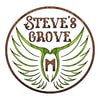

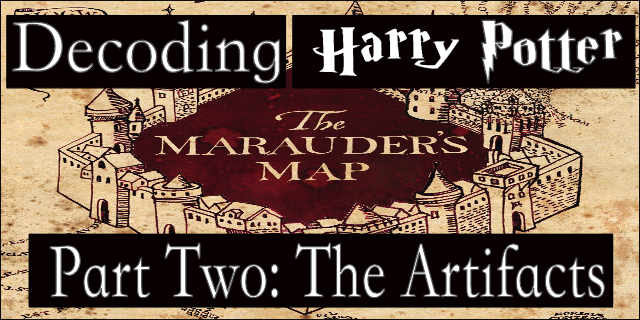
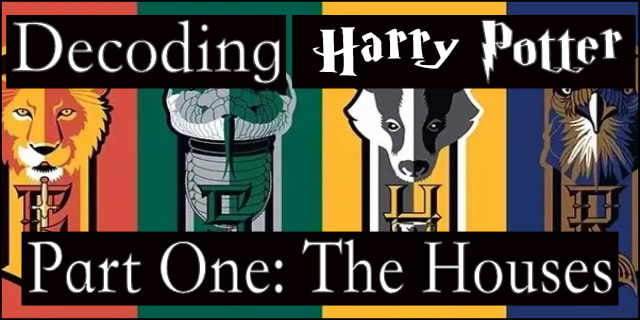
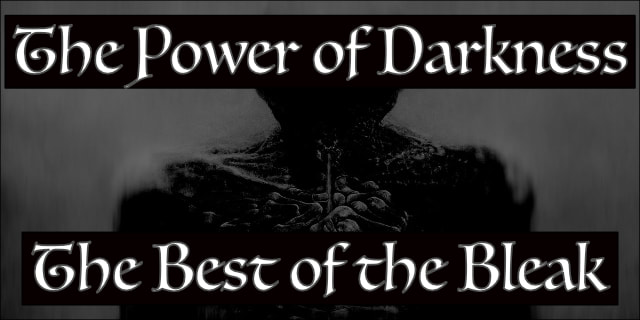
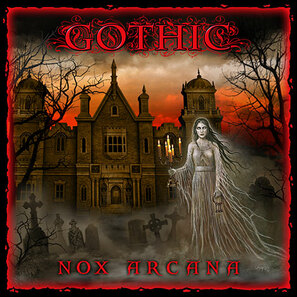




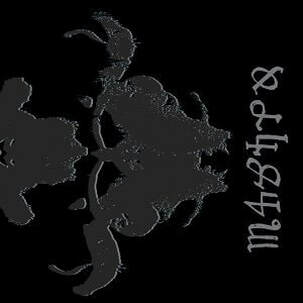
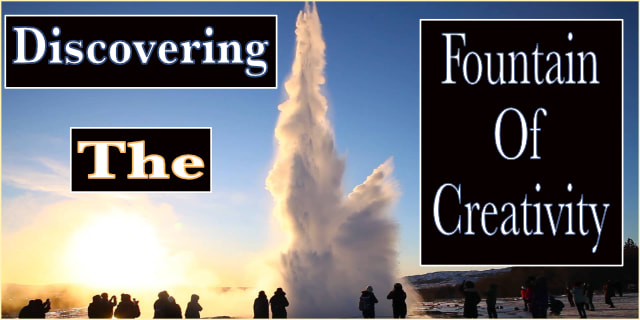
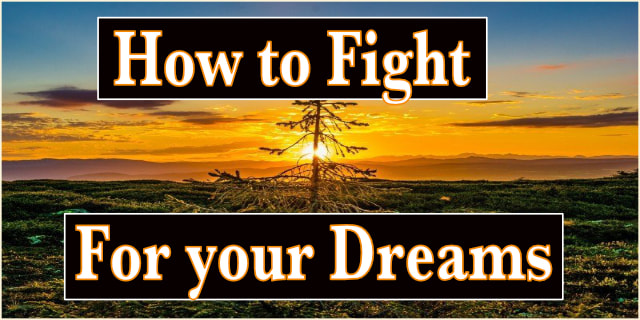
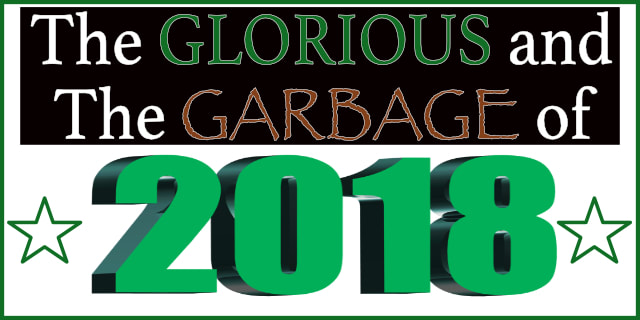
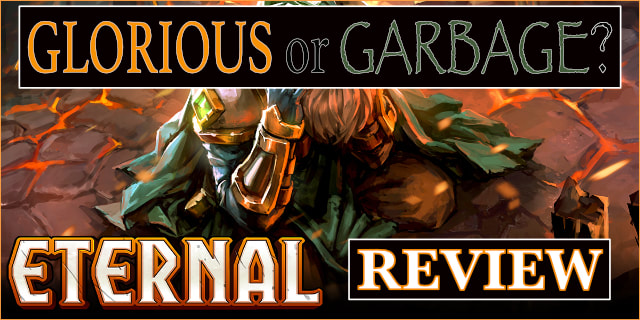
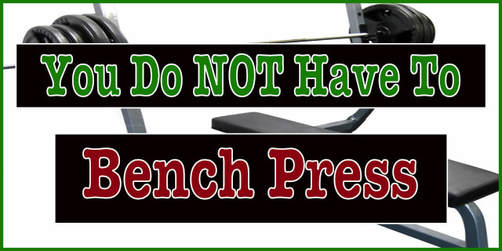


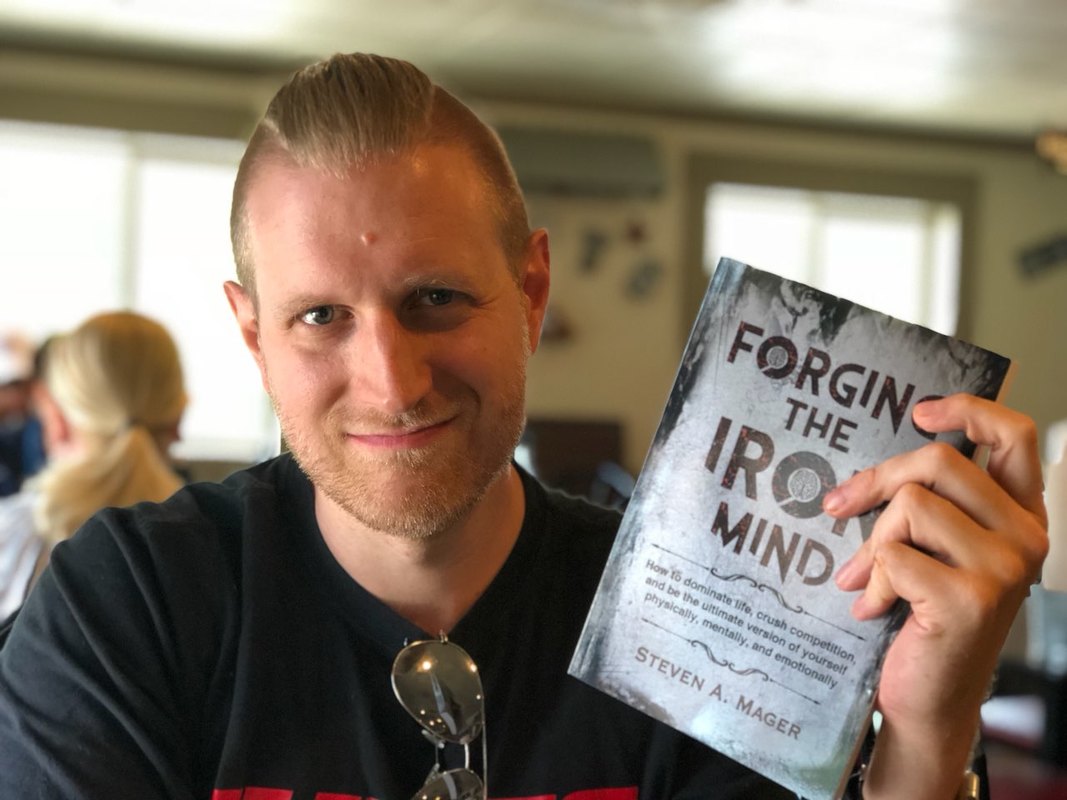
 RSS Feed
RSS Feed